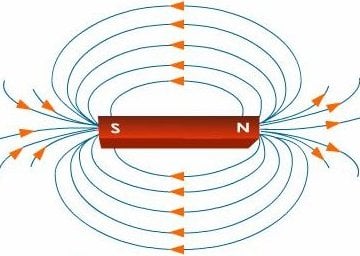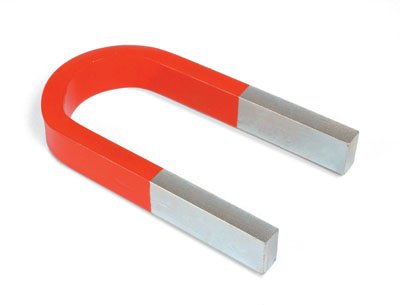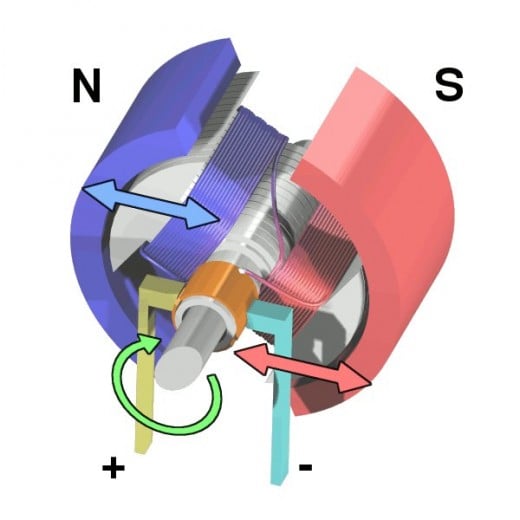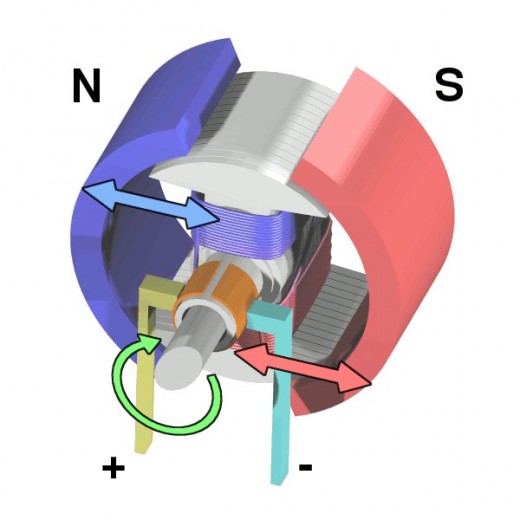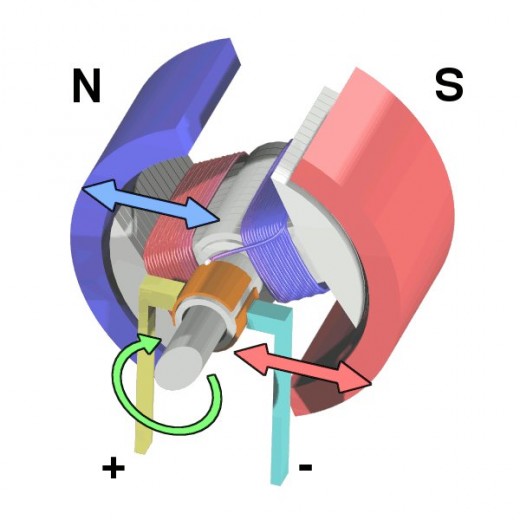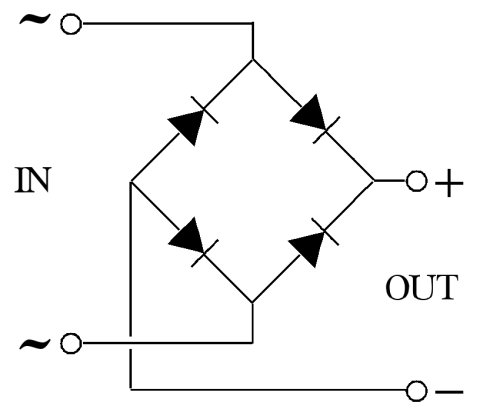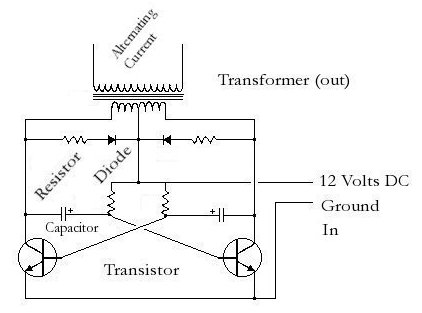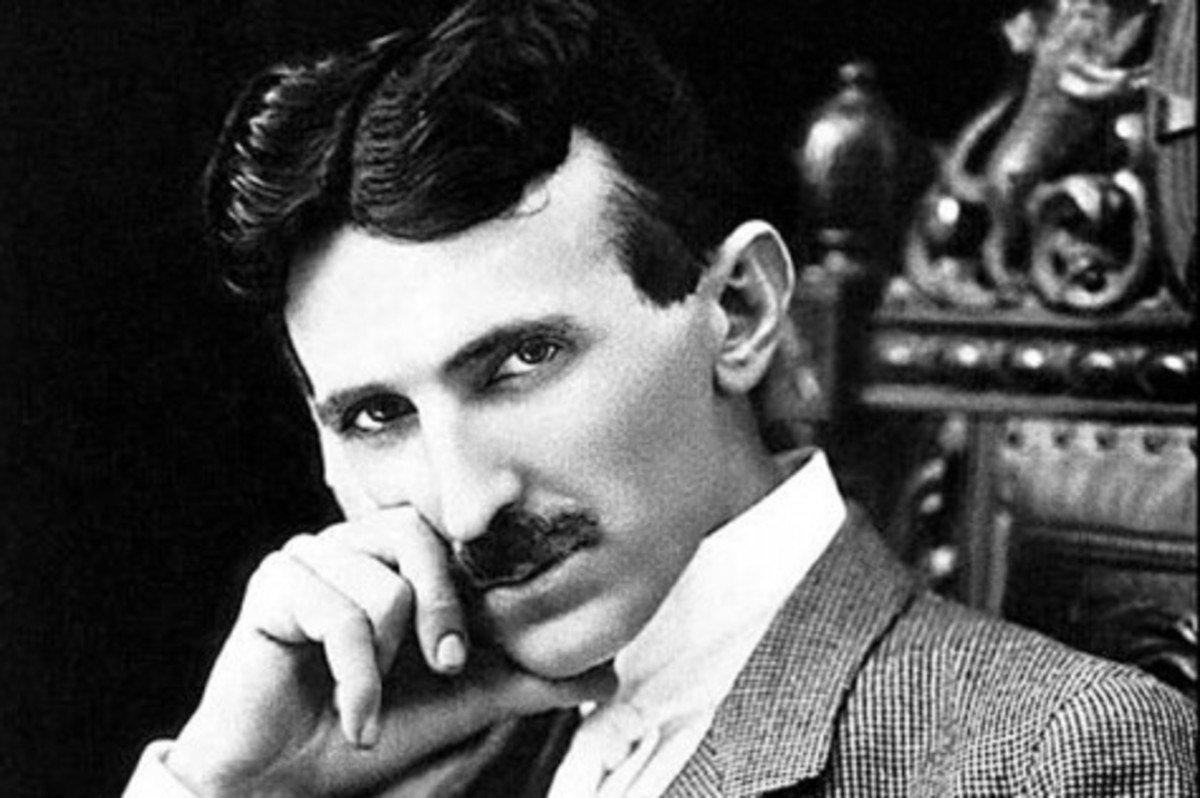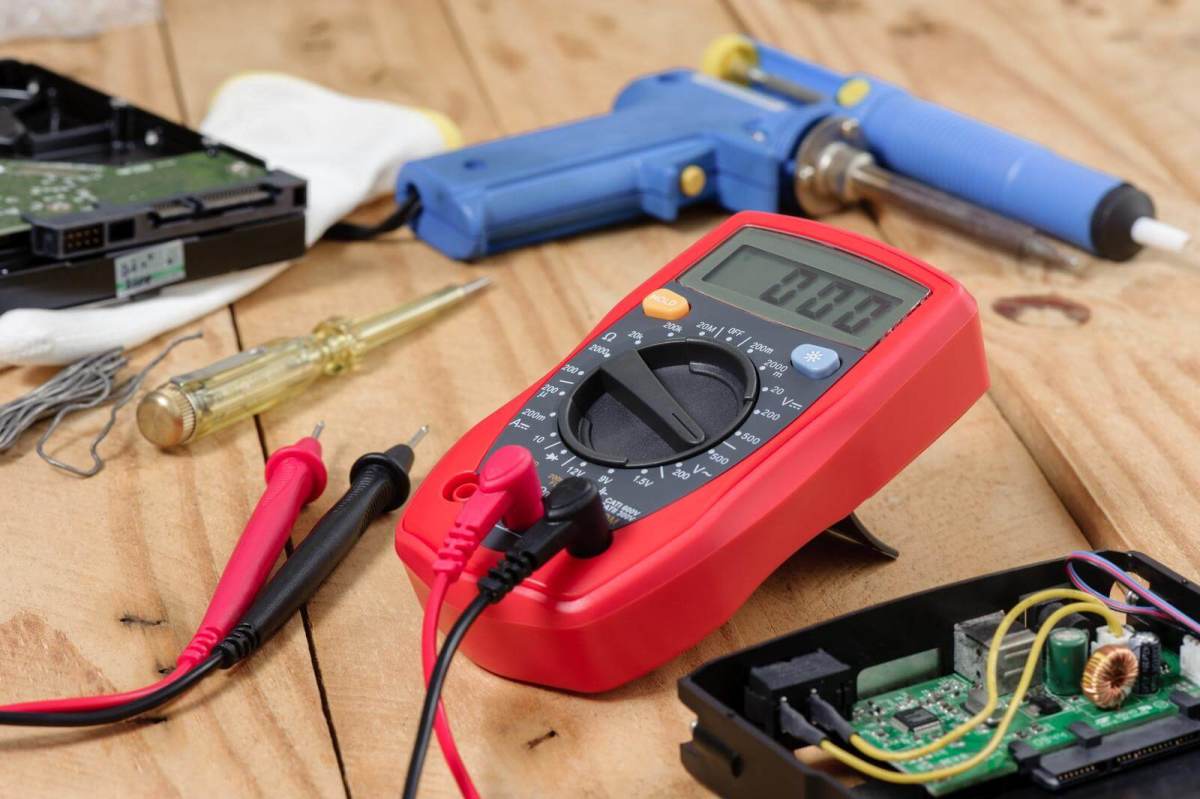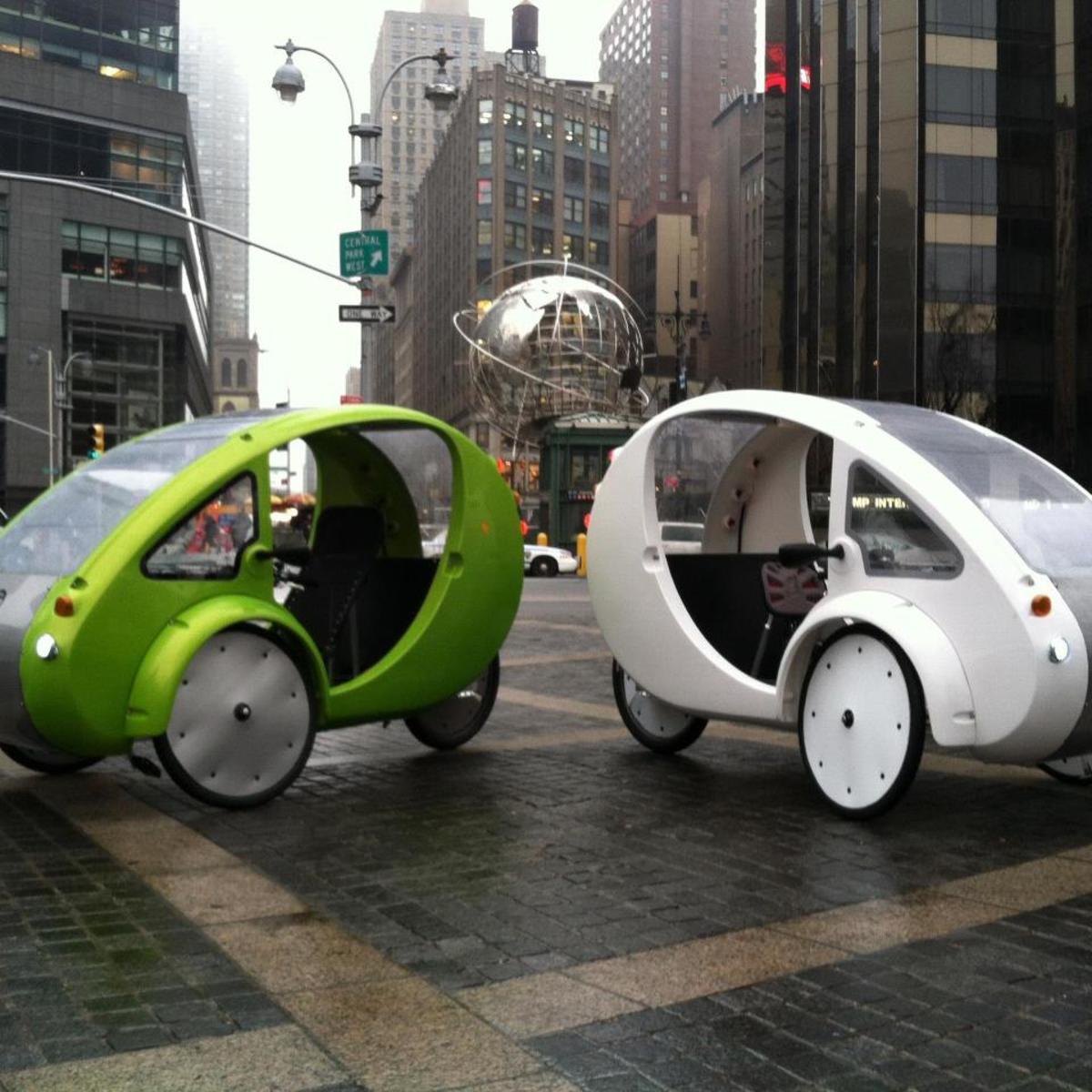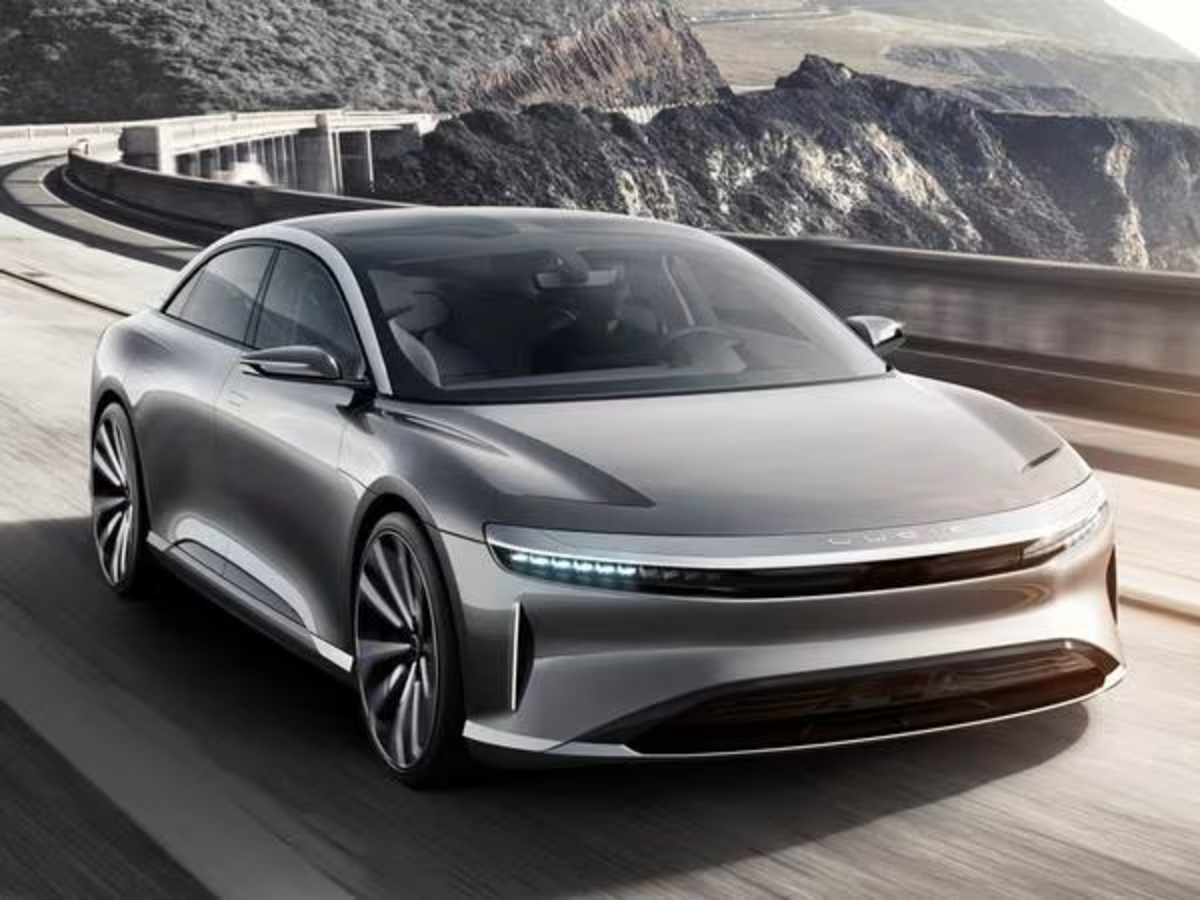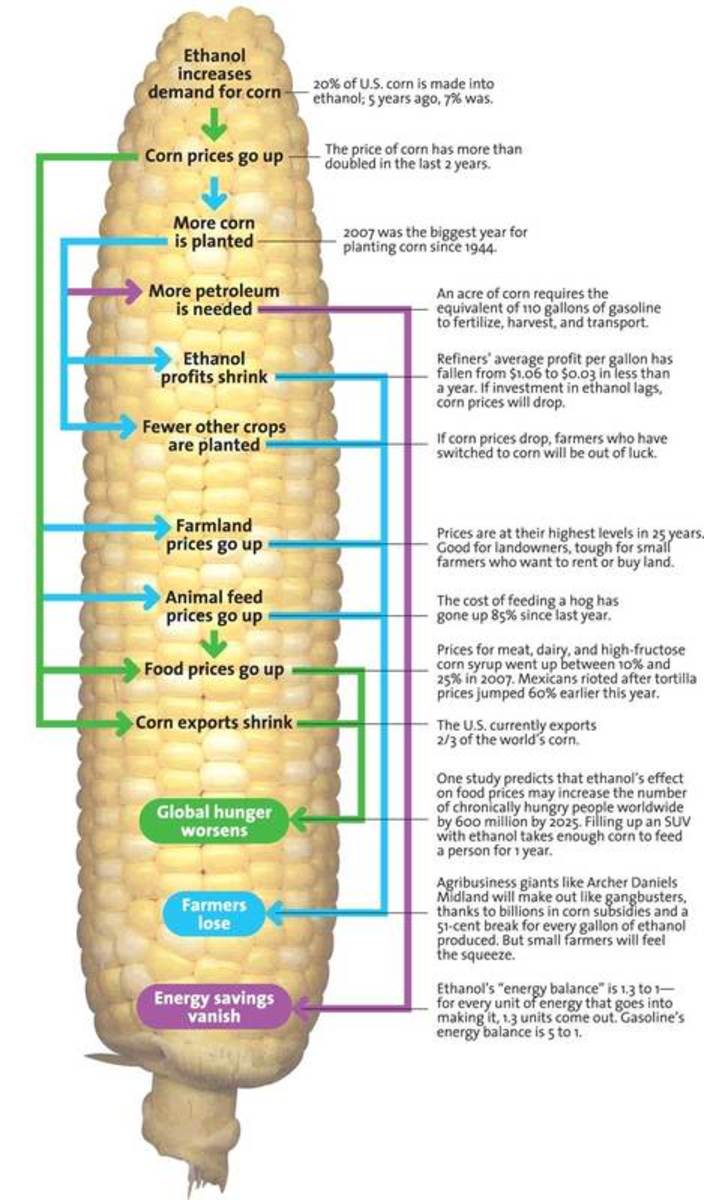Future Car - Electric Motors
Electricity and Usage
Introduction
Though there are only brief mentions of "future" and/or "car" in this hub it is with these uses of technology in mind that this hub is being written. In fact, by the end of this article the contents will be exclusively concerned with hybrid electric motors. In a previous article I discussed how electricity is generated and stored. Also, what electricity is. This discussion can be found in "Future Car -Electricity & Battery Technology."
With so many new cars being designed to run solely on electricity or hybrids to run on both gasoline/diesel and electricity and to generate electricity within the car itself, I thought it important to discuss:
- What electricity is (a quick review)
- The two forms of electric current both direct and alternating (also a quick review)
- How magnetism and electricity interact
- How electricity is used to impart motive force
- The advantages and disadvantages of electric motors
What is Electricity?
What electricity is involves a basic understanding of atomic and electrical theory. Both have to do with the structure of atoms, specifically, the number and protons in the nucleus (center) or electrons in orbit around the nucleus of an atom. As mentioned in the link above, atoms that have an electrical charge have an unequal number of electrons to protons in the nucleus of an atom. An electrically neutral atom has the same number of protons and electrons. As the electrons orbit the center of an atom these are the atomic particles that give an atom an electrical charge. If an atom has fewer electrons than protons then it has a positive charge; an atom with more electrons than protons has a negative charge.
What is Current?
Electricity has no "flow" unless it is going somewhere. Flow, in terms of electricity, is called current. So the amount of flow is the amount of current. This current is measured in units called amperes. If electric flow is in one direction only, say from negative to positive, then it is Direct Current (DC). If, on the other hand, the current flows in one direction and then reverses direction, at a precise and regular interval, then the current is said to be Alternating. Alternating current (AC) can be converted to direct current and direct current can be converted to alternating. This last is an important concept when talking about electric motors.
Electricity can be produced either chemically or mechanically.


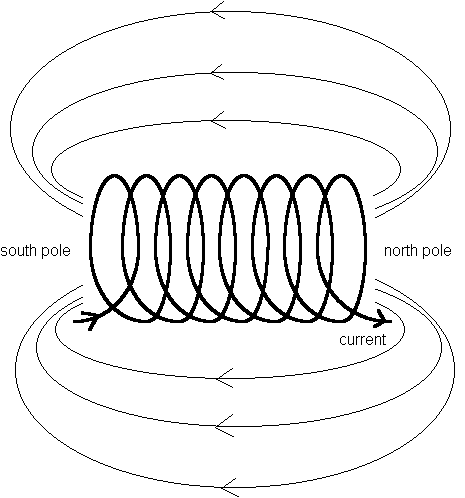
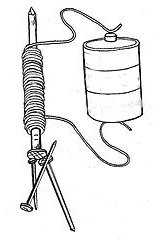
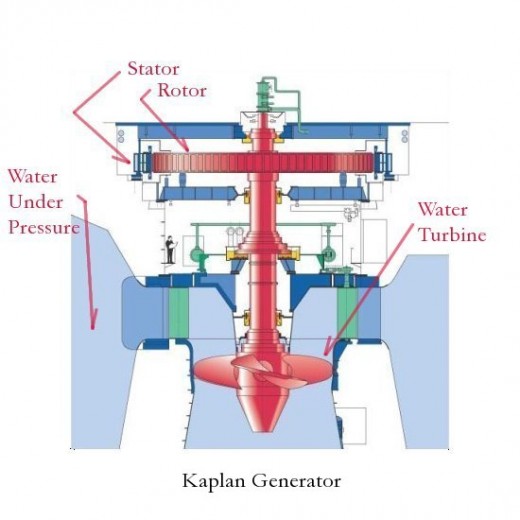
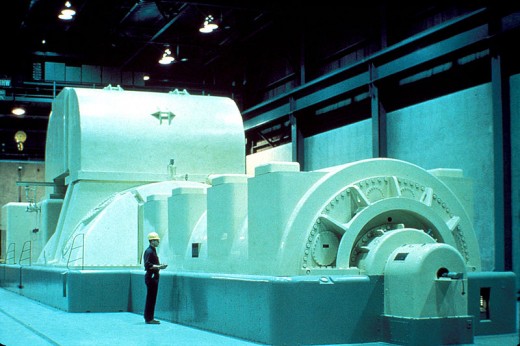
Magnetism, Electricity, & Motion
Magnetism
As you may remember from
grade school a magnet can attract metals that are iron (ferrite) or have
iron in them. Magnets also have "poles" or ends that are defined as North and South. As you also may remember like poles repel or push each other away, and dissimilar poles attract. So, for example, if you had two bar magnets and tried to push their north poles together they would push away from each other, but if you brought the south pole of one bar magnet near the north pole of another bar magnet they would attract and stick together. Magnets have field lines that are invisible (but can be seen with iron filings and paper over the magnet), but exert a force nevertheless. These lines of magnetic force can impart electricity into wire (or a coil of wire) when that wire is passed through it.
Magnetism and Electricity
You may also remember that an electromagnet can be created by wrapping wire around a nail and then running electricity through that wire. We all remember picking up thumbtacks, paperclips, or nails with an electromagnet made with wire, nail, and battery. I'm sure you also remember that the nail stopped being a magnet as soon as the electricity was shut off.
So there is definitely a connection between magnetism and electricity.
How Electricity is Produced via Motion
What isn't as widely known is that when a wire is passed into a magnetic field electricity is produced. How much electricity depends on the size of the magnets and the force causing the coils of wire to spin near those magnets. By the way, the number of cycles per second (Hertz) matches the number of rotations per second of the machine generating electricity. e.g. household current in the United States flows at 60Hz so the machine generating the power spins at 60 revolutions per second1.
If the production of electricity is via mechanical2 means then magnetism plays a vital role. Any time a wire is passed through a magnetic field an electrical charge is produced in the wire. The orientation of the magnetic field and the direction the wire is passed through that field determines the direction of current flow. This is how generators, alternators, and dynamos work. By creating electricity from the rotation of coils of wire through a magnetic field. Of course this means the wire-coil is somehow mounted such that it can rotate 360°. Alternatively, the magnets or magnetic field, can be the rotating member with the wire coils arranged around those magnets. Either way, as long as the coils are passing through a magnetic field electricity is "imparted" to the wires or wire-coils.
1 This is no longer necessarily true, but at one time it was critical that a generator spin at exactly 60 RPM. These days electronics can set the Hertz.
2 Ignores the piezoelectric effect.
Two Pole DC Motor
Click thumbnail to view full-size


Producing Motion from Electricity
When electrical current is pushed through a coil of wire it produces a magnetic field. If permanent magnets surround the coils then a magnetic interaction takes place. As magnets have two poles, one called north and the other south and like fields repulse or push away from each other. Changing the state of the field in the coil can cause the coil and rotor those coils are mounted to, to move. This way motion can be imparted to the coil of wire; or the magnetic field. This is how an electric motor works. Notice this is just the opposite of how electricity is generated mechanically.
Clicking on each thumbnail, from left to right, will give you an idea of rotation.
Direct Current Motor
In the illustrations at right electricity is supplied to coils via a rounded conductive pathway. This pathway on a motor is called a "commutator." This is the small copper colored "ring" upper right in the illustrations. The ring is in near constant contact with two conductive "brushes" that transfer electrical power from the power source to the motor.
Notice that the ring is split. As the motor turns the commutator also turns. The electrical current applied to the commutator then moves into the coils wrapped around the rotor causing that part of the rotor to have a magnetic field. If the field in the rotor is the same direction (say north) as the field in the magnets (also north) surrounding the rotor then they will push away from each other. If the field in the rotor (say south) is the opposite of the field in the magnets (say north) surrounding the rotor then they attract to each other. The magnets surrounding, but not touching the rotor, are called the stator because they are stationary.
Of
course, this motor as described is a direct current motor which requires
physical contact with wiring (via brushes) between the power source and the motor's rotor. The main disadvantage of a dc motor is that the brushes eventually wear out due to the friction.

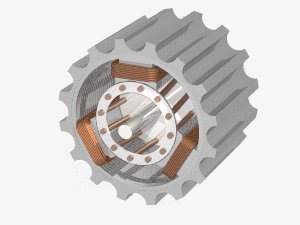
Alternating Current Motor
Another name for this motor is induction motor. It was invented by Nicola Tesla in 1882 when he realized that an alternating current "wave" could cause motion if the coils of wire (windings) were arranged to take advantage of that wave. This type of motor does not require contact via brushes or wires from the power source. Instead a magnetic field is "induced" in both the rotor and the stator. Since the alternating current occurs as a wave moving that current around the stator causes the rotor to turn.
Notice in the figure at right that there are no brushes nor direct electrical connections to the rotor. In fact the rotor is simply an arrangement of iron or aluminum bars in a "squirrel cage" configuration. The electrical current is passed through the stator (unlike the DC motor) and the wave like properties of the alternating current cause the rotor to spin as the current is passed through the wiring in the stator.
The most common type of motor is the "synchronous" motor which spins at the same speed as the frequency (Hertz) of the supplied AC current. In the U.S. that would be 60Hz and in Europe 50Hz. Gearing can be attached to the motor to either increase or decrease the speed. But this doesn't really lend itself that well to supplying a source of power to a car.


Inverter Technology
As stated (way above) alternating current can be converted to direct current and direct current to alternating.
Converting AC to DC is really straightforward with a device called a bridge rectifier. This is simply an arrangement of four diodes3 that only allow current to flow in one direction. Since an incoming alternating current goes from positive to negative and then negative to positive the arrangement of four diodes "flattens" out the AC wave converting it to DC.
An inverter can convert DC to AC; it is the opposite of a rectifier. Inside the inverter is an oscillator circuit that can convert the "flat" incoming DC current to one that alternates. The wonderful thing about this device is that the outgoing AC can be at any frequency desired. Which means that a synchronous induction motor can then be made to run at a wide range of speeds; not just based on 60Hz. Imagine then that the inverter takes it's "cues" from an "accelerator" pedal to increase or decrease the oscillations. The electricity passed from the batteries and then from the inverter, with input from the "gas" pedal, would drive the motor.
Early inverters used a counter-rotating force, at precisely the opposite frequency of the incoming current to change from AC to DC. In fact the first inverters did what bridge rectifiers do today. It wasn't until 1957, when high power transistors were created that solid-state inverters could be made.
3 A diode allows electricity to flow in one direction only.
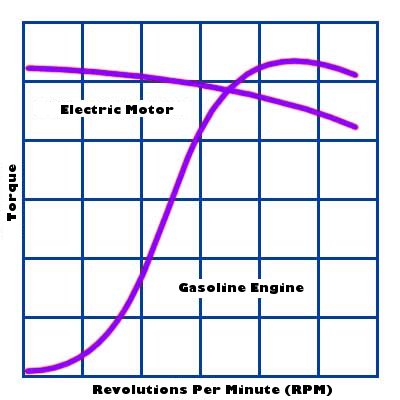
Torque Curves
As can be seen in the graph at right, torque produced by an electric motor is much more consistent over the range of revolutions per minute (RPM) of a gasoline engine. This is the real "magic" of electric over gasoline. Though the electric motors driving future cars may not have the peak torque of a gasoline engine car, that torque is nearly the same across the entire range of the electric motor's operating speed. And torque, converted to rotational force, is a very important consideration when applied to moving a vehicle. As you can see from the graph the electric motor has most of it's torque at the very bottom of the scale in rotational speed. The torque decreases, slightly, with an increase in RPM. In the gasoline engine torque is not at it's highest until the RPMs are quite high.
In this way torque, in an electric motor, is far more important than horsepower.
Advantages of Electric Hybrid Motors
AC Motor
| DC Motor
|
|---|---|
Highly Reliable
| Near Perfect conversion of energy
|
Rugged Construction
| Rugged Construction
|
Near Flat Torque Curve
| Near Flat Torgue Curve
|
Disadvantages of Hybrid Electric Motors
AC Motor
| DC Motor
|
|---|---|
Some power loss at Inverter
| Brushes wear out
|
Finite Life (longer than DC though)
| Finite Life
|
This is the fifteenth in the series on future cars.
Future Cars
- Future Car - Ford's Hydrogen I.C.E.
I.C.E. stands for Internal Combustion Engine. Ford is currently looking at creating a car that will bridge the gap between gasoline power and the very likely future fuel; hydrogen. The I.C.E. burns hydrogen... - Future Car - Chevrolet Volt
The Chevrolet Volt is a range extended electric that can be plugged into a standard wall outlet (120V). The vehicle to be produced by the General Motors Chevrolet division. It is expected to be launched as a... - Future Car - Chrysler EV Series
EV stands for Electric Vehicle. Much to everyone's surprise Chrysler recently unveiled an all electric vehicle called the Dodge Circuit EV. The Circuit will be an all electric sports car vaguely reminiscent... - Future Car - The Problems with Hydrogen
Hydrogen is the lightest element in the periodic table and the first listed. It is a colorless, tasteless, odorless, non-metalic gas that is highly flammable. Hydrogen can be ignited in an air (or oxygen)... - Future Car - Toyota / Honda
Sorry to join these two models in one hub, but neither company (Toyota or Honda) has a lot to say about the new models. Toyota in particular won't say anything about the upcoming Prius, but rumors abound. ... - Future Car - Subaru
Subaru is the western spelling for the Japanese word for - Future Car - Peugeot / Citron
Peugeot and Citron is now known as Peugeot Citron. The companies are now combined though each is marketing and selling it's own particular models. If Citron continues as a viable company remains to be... - Future Car - Opel
Opel, in coopreation with General Motors, has introduced the Ampera (or is it Flextreme?) as a diesel plug-in series hybrid concept car. It can travel thirty-four (34 mi) miles on its lithium-ion battery... - Future Car - Tesla
Tesla1 Motors was founded in 2003 by Martin Eberhard, Marc Tarpenning and Ian Wright in an attempt to build upon and market an all electric car based on the TZero AC propulsion car. The propulsion system, in... - Future Car - Aptera
According to Paul Wilbur, Chief Executive Officer of Aptera Motors, Aptera is Greek for - Future Car - Nissan Leaf
Founded in 1931 as Datsun, Nissan Motor Company is a publicly traded company and one of the largest in Japan. In 1999, Nissan allied with Renault S.A. of France, when that company bought a forty-four point... - Future Car - Renault
Renault, a French automaker, was founded in 1898 by Louis Renault, and his brothers Marcel & Fernand along with friends Thomas Evert and Julian Wyer. While Louis handled design and engineering Marcel and... - Future Car - Electricity & Battery Technology
Though the only mention of future or car in this hub is in this and the next paragraph, it is with an eye toward the future car that the hub was written. - Future Car - Electric Motors
Introduction Though there are only brief mentions of - Future Car - Hybrid Types
With all the talk of

